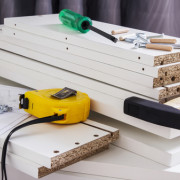How To Use Fasteners To Minimize Drag In Aircraft

One of the goals of any aircraft design methods is to reduce the overall drag in aircraft as much as possible as that affects the plane. When a plane has too much drag, it tends to need more fuel to move at a specific speed. This has adverse effects on many aspects of flying it, including increasing the amount of fuel it needs to carry, limiting its top speed and even making it more expensive to fly. In addition to that, too much drag will also result in more environmental damage, something that many manufacturers are trying to avoid as much as possible.
Making sure that a plane design has as little drag as possible should therefore be a main goal of any aircraft designer. To do this, however, one would need to understand the many things that cause drag, and then sort them out one by one. One of the most important of these is the way in which fasteners are used in the design. To ensure that drag is minimized, some of the tips one can use to reduce drag include:

Limiting the number of fasteners used
When the number of fasteners used on the surface of an aircraft is minimized, it makes the overall profile of the aircraft smoother and this will in effect reduce drag. This therefore means that when you are in the design stages of the project, you need to find means of reducing how many fasteners will have an influence on this outer profile.
Using only the bare minimum number of fasteners will also reduce the overall weight of the aircraft. Of course, to do this effectively, you will need to ensure that only high quality fasteners such as titanium hex nuts are used. This way, you can be sure that even if they are few, they will be able to take the weight of the plane components with ease.
Smoothen the fasteners
If you are going to use fasteners on any control surface or other surface of the aircraft, you should also consider making them smoother. The aim of this process should be to ensure that all the air passing over the fastener does so with minimal resistance from it. In order to do this effectively, you will need to work with a high quality fastener vendor who has a lot of experience in the field. In addition to getting specialty fasteners such as titanium socket head cap screws, they are also more likely to be in a position to work out how to make the fasteners as smooth as possible.
Use the right fasteners in the right locations
Using the correct type of fasteners for a specific location can also help reduce drag. For instance, when putting together a control surface, a rivet might be of more use than a bolt and nut assembly. Once again, consulting a high quality fastener vendor is usually the best way to get advice regarding how to make such a selection.
In summary, as long as you do all the above, you should be in a better position to ensure that the plane design has minimal drag as far as fasteners are concerned.
About the Author

Started my career in the fastener world in 1969 at, Parker Kalon Corp. a NJ based screw manufacturer located in Clifton, NJ working in inventory control, scheduling secondary production and concluding there in purchasing. In 1971 I accepted a sales position at Star Stainless Screw Co., Totowa, NJ working in inside sales and later as an outside salesman, having a successful career at Star I had the desire with a friend to start our own fastener distribution company in 1980 named: Divspec, Kenilworth, NJ. This was a successful adventure but ended in 1985 with me starting Melfast in August 1985 and have stayed competitive and successful to date. Melfast serves the OEM market with approximately 400 accounts nationally.
